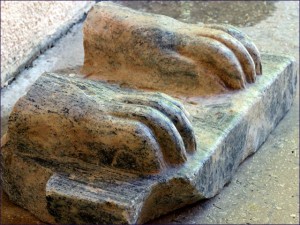 HAZOR, Israel – Archaeologists in Israel have uncovered a historic relic in the ruins of an ancient Biblical town.
HAZOR, Israel – Archaeologists in Israel have uncovered a historic relic in the ruins of an ancient Biblical town.
Since the 1950’s, experts with Hebrew University have led excavations at the ancient Biblical site of Hazor, which is located north of the Sea of Galilee. Though there was a temporary lull in archaeological studies at the site during the 1970’s and 1980’s, efforts to unearth the town resumed about two decades ago. UNESCO has recognized Hazor’s remains as a World Heritage Site, and the Jewish Press describes the location as “a key site for testing the reliability of the biblical historiography.”
In the Bible, Hazor is mentioned approximately twenty times, most notably in the book of Joshua. Joshua 11:10 describes the settlement as “the head of all those kingdoms” that the Israelites conquered. According to the Israeli government, Hazor is the largest Biblical-era site in Israel, and most likely had an impressive population during the second millennium B.C. of approximately 20,000. King Solomon fortified the city, but—even though it prospered during the reigns of Ahab and Jeroboam II—the area was destroyed in 732 B.C. by the Assyrian army.
Recently, Israeli archaeologists have been digging in a “destruction layer” of Hazor that is most likely from the 13th century B.C., which could have been from the Israelites’ annihilation of the Canaanite village.
Last week, a team of researchers led by Professor Amnon Ben-Tor and Dr. Sharon Zuckerman announced the discovery of a fragment from an Egyptian Sphinx. Though the Sphinx remains are far from complete, with only the front paws and part of the base discovered so far, experts say it is still an amazing discovery.
Between the Sphinx’s legs is a hieroglyphic inscription with the name “Mycerinus”—most likely a reference to an Egyptian king who ruled more than 4,000 years ago. Historians believe Mycerinus was one of the rulers who oversaw the construction of the famous Giza pyramids.
In addition to the king’s name, the phrase “Beloved by the divine manifestation… that gave him eternal life” are inscribed on the Sphinx. According to a press release from the Israel Ministry of Foreign Affairs, Professor Ben-Tor and Dr. Zuckerman say the words found on the Sphinx suggest that the statue may have originated in the Biblical city of On (Genesis 41:45, 46:20).
“As the only known Sphinx of this king discovered anywhere in the world—including in Egypt—the find at Hazor is an unexpected and important discovery,” the release states. “Moreover, it is only piece of a royal Sphinx sculpture discovered in the entire Levant area (the eastern part of the Mediterranean).”
Though the artifact’s origins remain somewhat of a mystery, the team of archaeologists doubt it was brought to Israel during the reign of Mycerinus, since Israeli-Egyptian relationships during the third millennium B.C. were very limited. Experts say it is more likely that the Sphinx was brought to Hazor at a later date, perhaps when the land of Canaan was ruled by Egypt.
Photo: Prof. Ben-Tor and Dr. Zuckerman
Become a Christian News Network Supporter...


